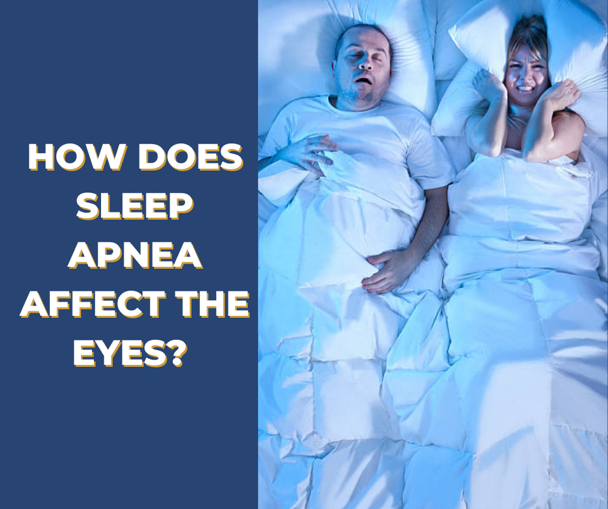How Does Sleep Apnea Affect The Eyes?
Posted by: Cobb Eye Center in Eye Health on July 26, 2022

According to the National Sleep Foundation, 22 million Americans suffer from sleep apnea, with 80 percent of cases undiagnosed. Sleep Apnea is a condition marked by abnormal breathing during sleep, often multiple times per night, causing lower-quality sleep and affecting your eyes.
It takes longer for patients with sleep apnea to produce replenishment tears. You are more likely to have ocular irritation, as well as a higher chance of developing floppy eyelids and an increased risk for glaucoma.
What Are The Types of Sleep Apnea?
According to the National Sleep Foundation, there are three types of sleep apnea:
Obstructive Sleep Apnea (OSA): OSA occurs when the airway at the back of the throat becomes physically blocked. That obstruction causes temporary lapses in the breathing.
Central Sleep Apnea (CSA): CSA happens because there is a problem with the brain’s system for controlling muscles involved in respiration, leading to slower and shallower breathing.
Mixed Sleep Apnea: When a person has both OSA and CSA simultaneously, providers refer to it as mixed sleep apnea or complex sleep apnea.
What Are The Symptoms of Sleep Apnea?
- Disrupted breathing in which a person’s respiration can become labored or even stop for up to a minute at a time
- Excessive daytime sleepiness
- Morning headaches
- Morning sore throat or dry mouth
- Snoring, including loud snoring that involves gasping, choking, or snorting, may cause a person to wake up briefly.
Which Are The Eye Conditions Associated With Sleep Apnea?
Glaucoma
Glaucoma is when fluid builds up in the front part of the eye, which increases pressure within the eye, causing damage to the optic nerve, leading to vision loss and sometimes blindness. Sometimes, it might be due to a drop in blood oxygen levels, which happens when you stop breathing. Therefore, people with sleep apnea should make it a priority to get their eyes checked for glaucoma.
Floppy Eyelid Syndrome
Floppy Eyelid Syndrome is an eye condition involving the upper eyelids that can lead to constant eye irritation, blurry vision, eye redness, or discharge. A controlled study with 102 patients with FES found that 90% of the participants also had obstructive sleep apnea.
More Eye Conditions Connected To Sleep Apnea
Patients who use a CPAP machine for sleep apnea are at risk of developing dry eye syndrome and bacterial conjunctivitis. Patients with sleep apnea may also experience conditions such as Non-Arteritic Anterior Ischemic Optic Neuropathy (NAION), keratoconus, or papilledema.
Talk To Your Eye Doctor
Call TODAY to make an appointment to schedule an eye exam, especially if you have been diagnosed with sleep apnea. We encourage you to share your medical history with your eye doctor to diagnose better and treat any eye conditions or ocular diseases.
We are here to help you keep your eyes healthy!

References: American Academy of Ophthalmology, American Optometric Association, National Eye Institute, and the National Sleep Foundation. This blog provides information and discussion about eye health and related subjects. The content provided within this blog and any linked materials are not intended and should not be considered medical advice. If the reader or any person has a medical concern, they should consult with an appropriately licensed physician.
